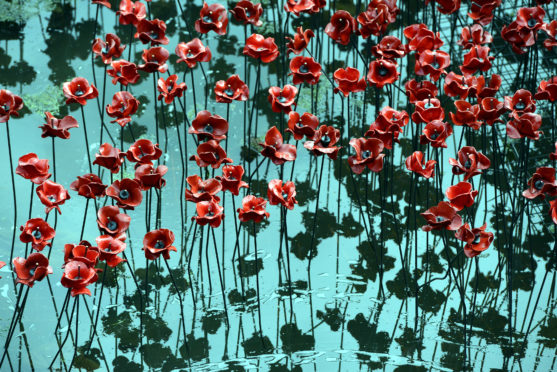In our second excerpt from The Courier’s book The Scottish Soldier’s Story, we learn how Pte William Manson endured the bleakest hardship after being captured during the first Battle of Ypres.
Pte William Manson of the 1st Black Watch, from Bridge of Allan in Perthshire, was captured at Ypres in November 1914, after being wounded in the thigh. Here he recounts his experience at the hands of the Germans:
“I was wounded in the advance on the 2nd November and left on the field. The French attacked and carried me back to a farm house.
They were compelled to retire, and left me with two other men in a barn. Two days later the Germans entered and captured me and my comrades, a man named Garner of my regiment, and a Frenchman.
The Germans gave me some food. Shortly after I was picked up the British began to shell the barn, and I was taken out and laid on top of a trench in the rain; they covered me with straw. I asked to be put down in the trench out of the rain, but they took no notice of my request, and I was lying there for six hours.
“At night they took me back to a field hospital behind the lines and dressed my wounds. I have nothing to complain of in regard of my treatment there.
“The next day they removed me on an ambulance cart to a Belgian nunnery, which was being used as a hospital. I do not know the name of the place. The nurses were Belgian ladies, and I was well treated.
I remained there for one night, and the next day was taken by train to St Vincent House, Paderborn, Westphalia. The journey occupied about two days, and I was treated well enough in the train but on the journey my comrades and I were turned out at a wayside station and laid on mattresses on the platform, and Germans spat in our faces and insulted us.
“I left St Vincent House in May 1915, and was taken to a convalescent hospital in the town, where I was detained for about a fortnight.
“I was well treated there, but the quality of the food was not so good as before. I was then removed to another convalescent hospital for a fortnight, and in June was taken from there to Sennelager III Camp, which was about four miles outside the town.
“I do not know the names of the Commandant or any of the officers of this camp, which contained about 4,000 men. On arrival I was put into hospital, and told to hold myself in readiness to proceed to England. My leg was practically useless, but they did not attempt to do anything for me, and I got no treatment whatever.
“I was in the camp hospital for about a month, and was then quartered in a large wooden hut, where we had to sleep feet-to feet on sacks filled with straw laid on the floor. The hut was packed as tightly as possible, Algerians, French and British being all mixed up indiscriminately, and it was infested with vermin. Its length was 50 or 60 feet, and it was heated by a stove at each end, but we were only supplied with coal dust in insufficient quantity and it was impossible to keep the place warm.
“Washing facilities were very inadequate. We were taken down by companies once a fortnight to get a shower bath, but only succeeded in getting a sprinkling of water. The sanitary arrangements were totally inadequate and most offensive.
“The Camp Hospital was utterly deficient in equipment, and there was practically no treatment at all, in fact, it might be described as a farce. There were no medicines, bandages, and only a student in charge, and the remedy for every ailment was aspirin. The food was awful and impossible to eat. The following is a typical menu:
7am Coffee without sugar or milk and a ration of “war bread” about 4in by 2in.
12am Potato and sauerkraut – no meat.
6.30pm Boiled maize or ‘sandstorm’.
“When first at the camp I was often in a starving condition, and, but for a share of the parcels received by my comrades, I should have starved. There was a so-called canteen at which one could buy cigarettes, and, at one time, sausages, but, later on, there was practically nothing to be had there.”
Postscript: Pte Manson recovered from his wounds and re-joined the army after the war.
Buy your copy
First World War – The Scottish Soldier’s Story, is a 150-page compilation of The Courier’s commemorative special First World supplements 1914-1918.
£11.99 with free p&p, available from www.dcthomsonshop.co.uk or call 0800 318 846 (Freephone), quoting CSOST, lines open Mon-Fri 8am-6pm, Sat 9am-5pm.
Also available from the DC Thomson Shop, Albert Square, Dundee DD1 1DD











